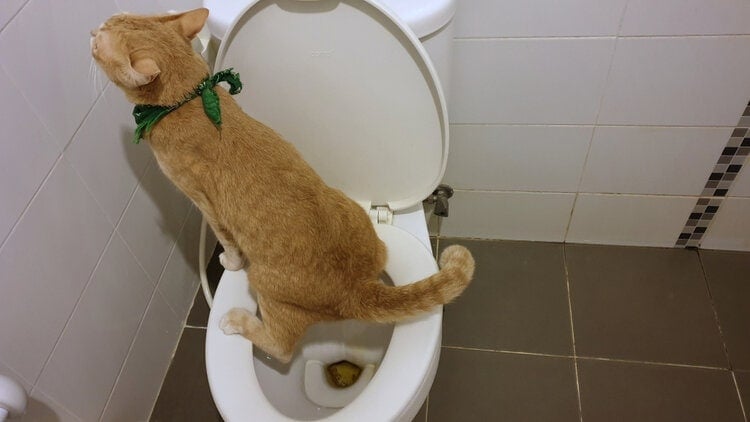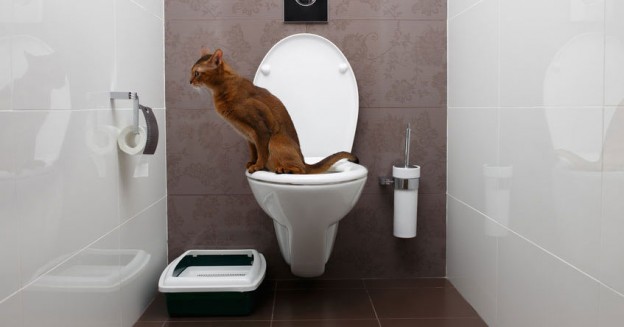Prevent Clogs and Damage: Never Flush Cat Poop Down Your Toilet - Professional Recommendations
Prevent Clogs and Damage: Never Flush Cat Poop Down Your Toilet - Professional Recommendations
Blog Article
Are you currently hunting for answers on Can You Flush Cat Poo or Litter Down the Toilet??

Intro
As pet cat owners, it's essential to bear in mind just how we dispose of our feline pals' waste. While it may seem practical to flush cat poop down the toilet, this practice can have detrimental effects for both the setting and human health and wellness.
Ecological Impact
Purging feline poop introduces hazardous pathogens and bloodsuckers right into the water system, presenting a considerable risk to marine environments. These pollutants can negatively influence marine life and concession water high quality.
Health Risks
Along with environmental issues, flushing feline waste can likewise pose wellness dangers to humans. Feline feces may have Toxoplasma gondii, a parasite that can cause toxoplasmosis-- a possibly serious disease, especially for pregnant ladies and people with weakened body immune systems.
Alternatives to Flushing
Thankfully, there are more secure and a lot more liable ways to dispose of feline poop. Take into consideration the following options:
1. Scoop and Dispose in Trash
One of the most common technique of throwing away pet cat poop is to scoop it into a biodegradable bag and throw it in the trash. Make certain to make use of a dedicated litter scoop and get rid of the waste without delay.
2. Use Biodegradable Litter
Choose naturally degradable cat clutter made from products such as corn or wheat. These trashes are environmentally friendly and can be securely thrown away in the garbage.
3. Bury in the Yard
If you have a backyard, think about burying pet cat waste in a designated area far from veggie gardens and water sources. Make certain to dig deep adequate to prevent contamination of groundwater.
4. Mount a Pet Waste Disposal System
Invest in an animal waste disposal system especially designed for feline waste. These systems use enzymes to break down the waste, lowering smell and ecological impact.
Final thought
Responsible family pet ownership prolongs past providing food and sanctuary-- it additionally involves appropriate waste monitoring. By refraining from purging pet cat poop down the bathroom and going with alternative disposal methods, we can reduce our environmental footprint and shield human wellness.
Why Can’t I Flush Cat Poop?
It Spreads a Parasite
Cats are frequently infected with a parasite called toxoplasma gondii. The parasite causes an infection called toxoplasmosis. It is usually harmless to cats. The parasite only uses cat poop as a host for its eggs. Otherwise, the cat’s immune system usually keeps the infection at low enough levels to maintain its own health. But it does not stop the develop of eggs. These eggs are tiny and surprisingly tough. They may survive for a year before they begin to grow. But that’s the problem.
Our wastewater system is not designed to deal with toxoplasmosis eggs. Instead, most eggs will flush from your toilet into sewers and wastewater management plants. After the sewage is treated for many other harmful things in it, it is typically released into local rivers, lakes, or oceans. Here, the toxoplasmosis eggs can find new hosts, including starfish, crabs, otters, and many other wildlife. For many, this is a significant risk to their health. Toxoplasmosis can also end up infecting water sources that are important for agriculture, which means our deer, pigs, and sheep can get infected too.
Is There Risk to Humans?
There can be a risk to human life from flushing cat poop down the toilet. If you do so, the parasites from your cat’s poop can end up in shellfish, game animals, or livestock. If this meat is then served raw or undercooked, the people who eat it can get sick.
In fact, according to the CDC, 40 million people in the United States are infected with toxoplasma gondii. They get it from exposure to infected seafood, or from some kind of cat poop contamination, like drinking from a stream that is contaminated or touching anything that has come into contact with cat poop. That includes just cleaning a cat litter box.
Most people who get infected with these parasites will not develop any symptoms. However, for pregnant women or for those with compromised immune systems, the parasite can cause severe health problems.
How to Handle Cat Poop
The best way to handle cat poop is actually to clean the box more often. The eggs that the parasite sheds will not become active until one to five days after the cat poops. That means that if you clean daily, you’re much less likely to come into direct contact with infectious eggs.
That said, always dispose of cat poop in the garbage and not down the toilet. Wash your hands before and after you clean the litter box, and bring the bag of poop right outside to your garbage bins.
https://trenchlesssolutionsusa.com/why-cant-i-flush-cat-poop/

We were made aware of that report on How to Dispose of Cat Poop and Litter Without Plastic Bags from a friend on another blog. Sharing is good. One never knows, you might be helping someone out. I thank you for reading our article about Can You Flush Cat Poo or Litter Down the Toilet?.
Book A Service Call Report this page